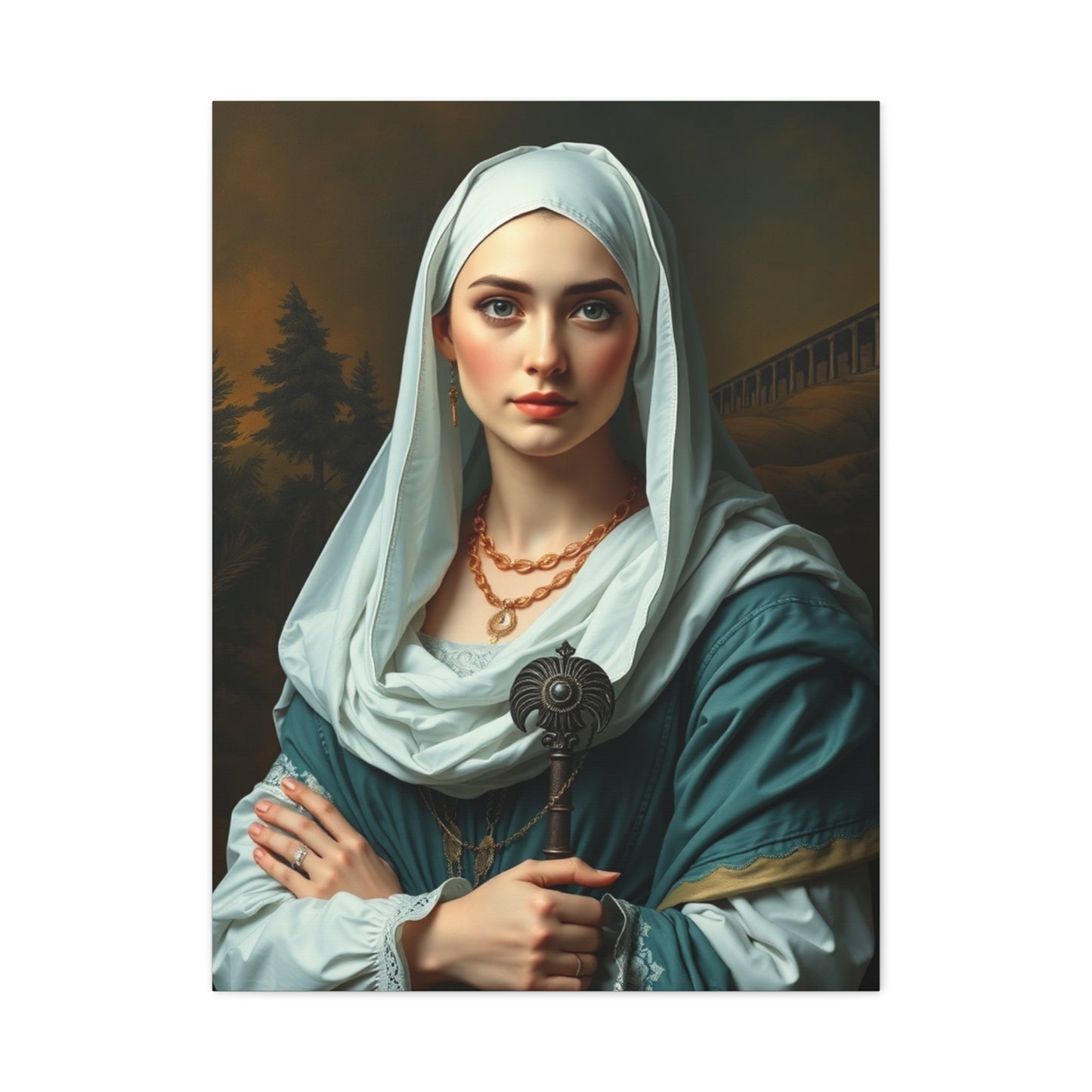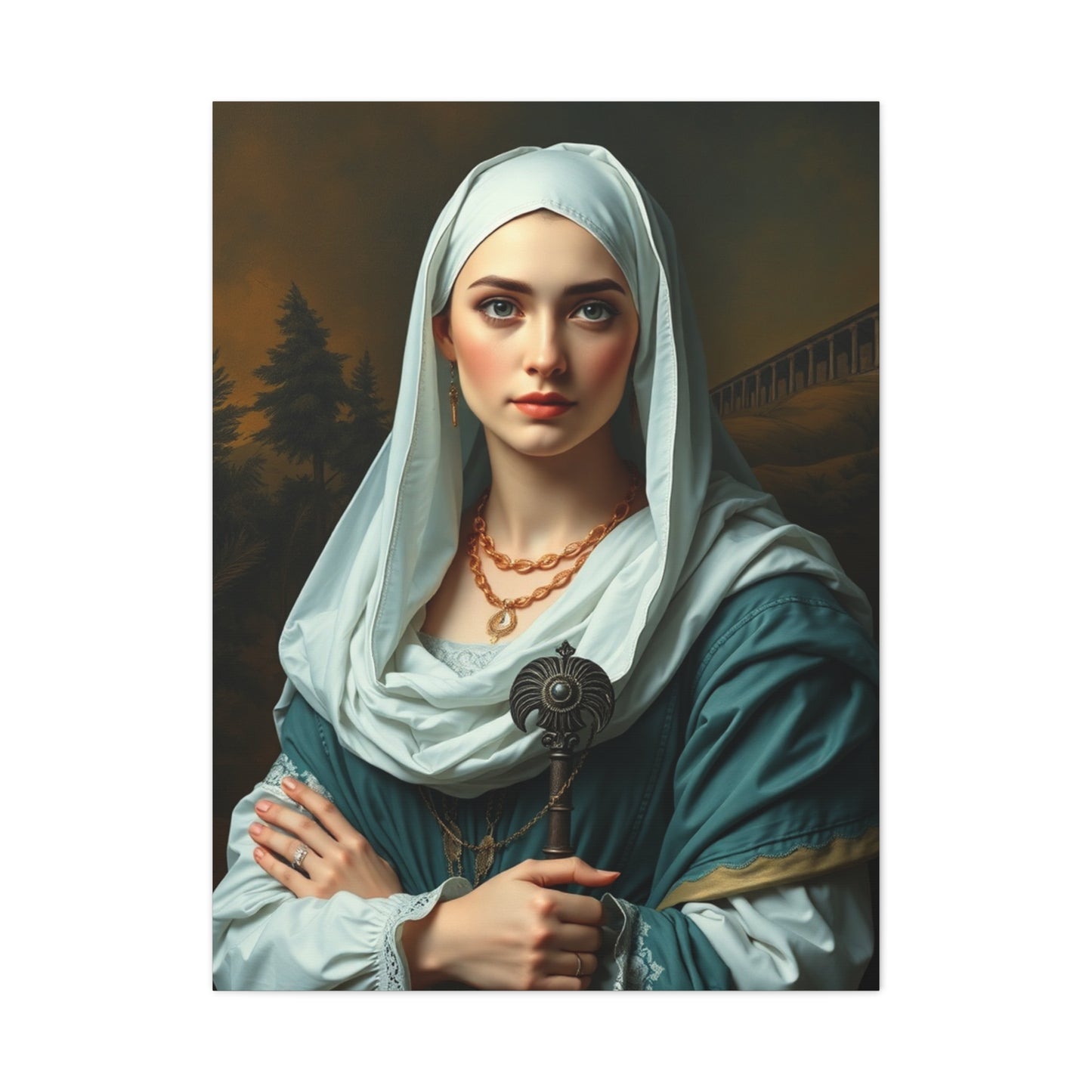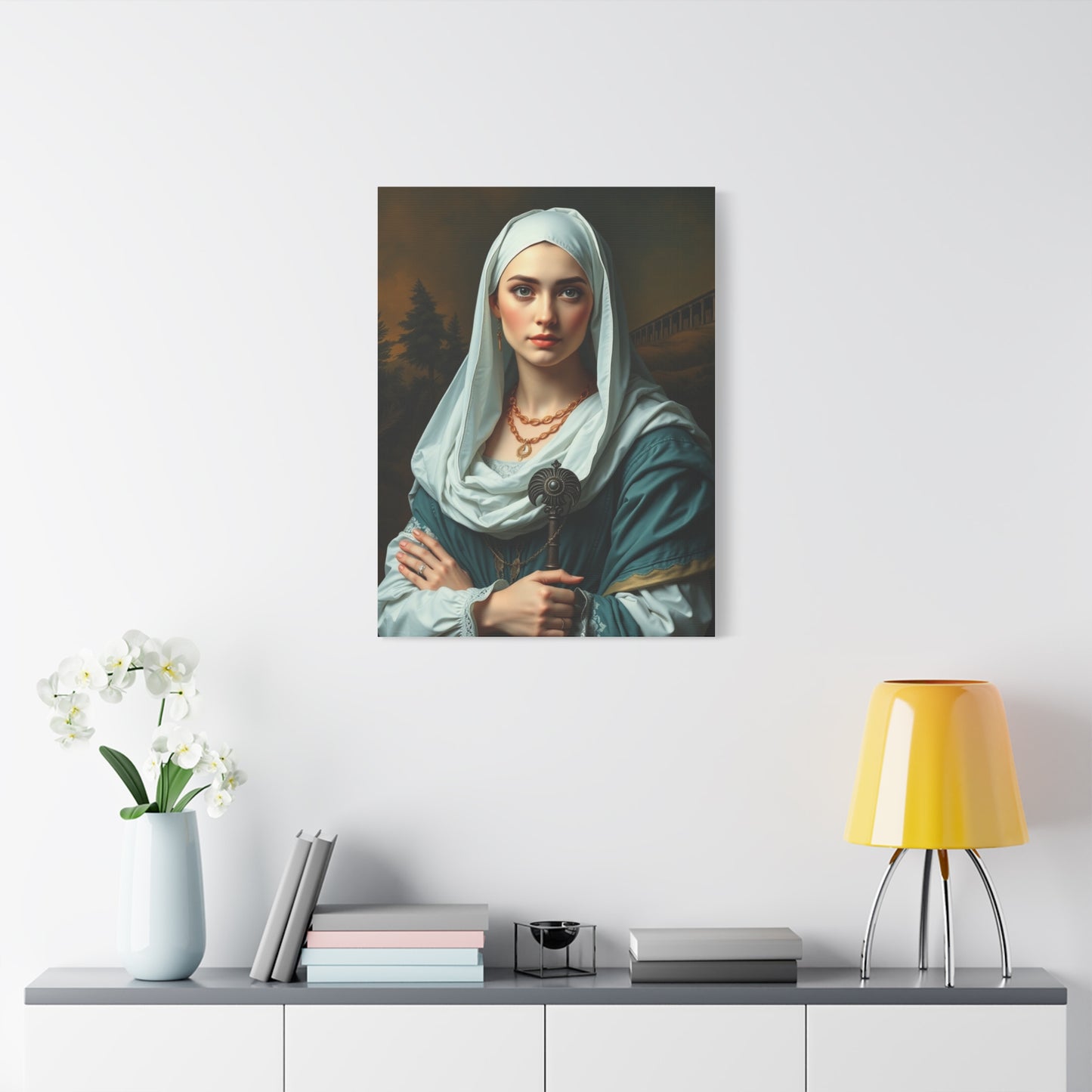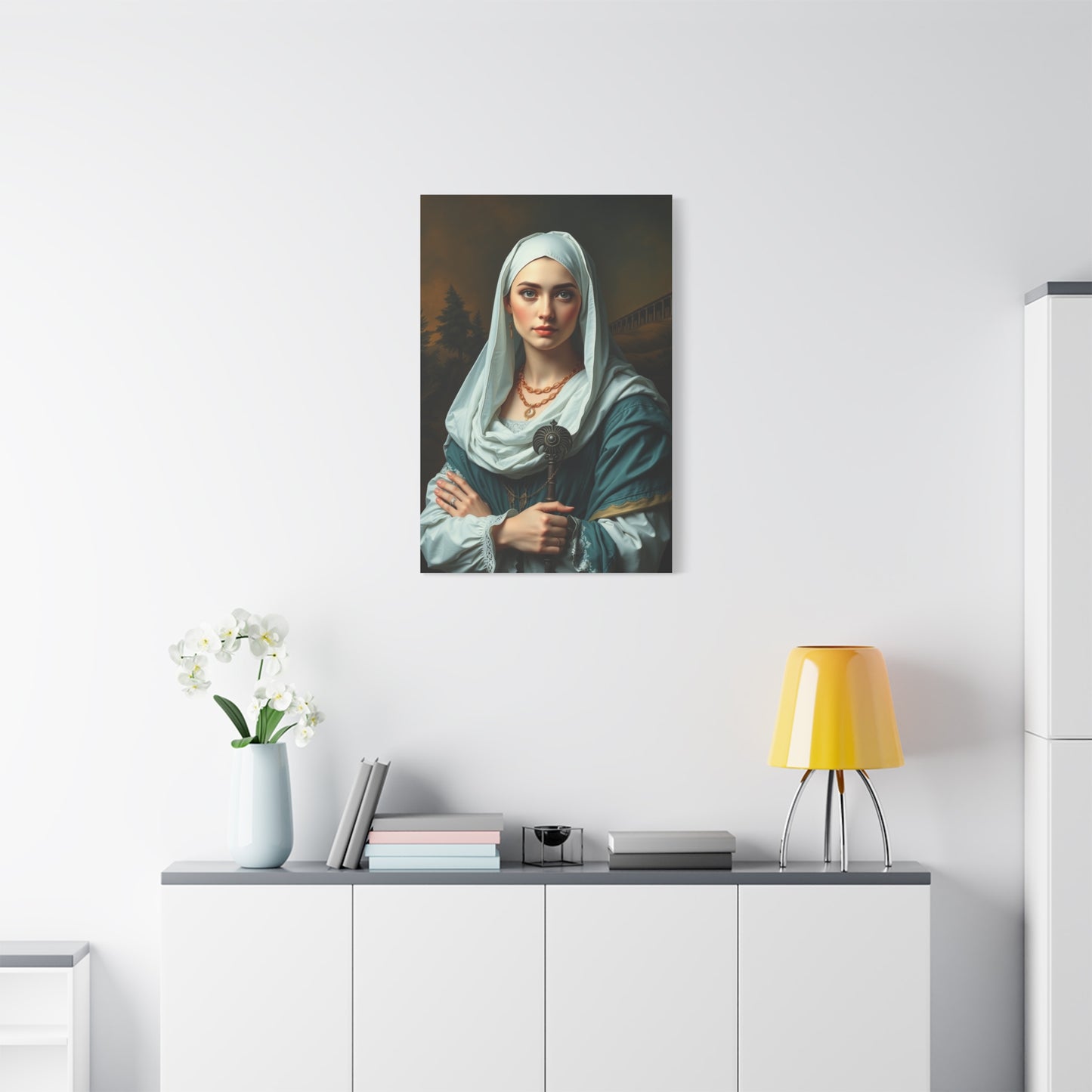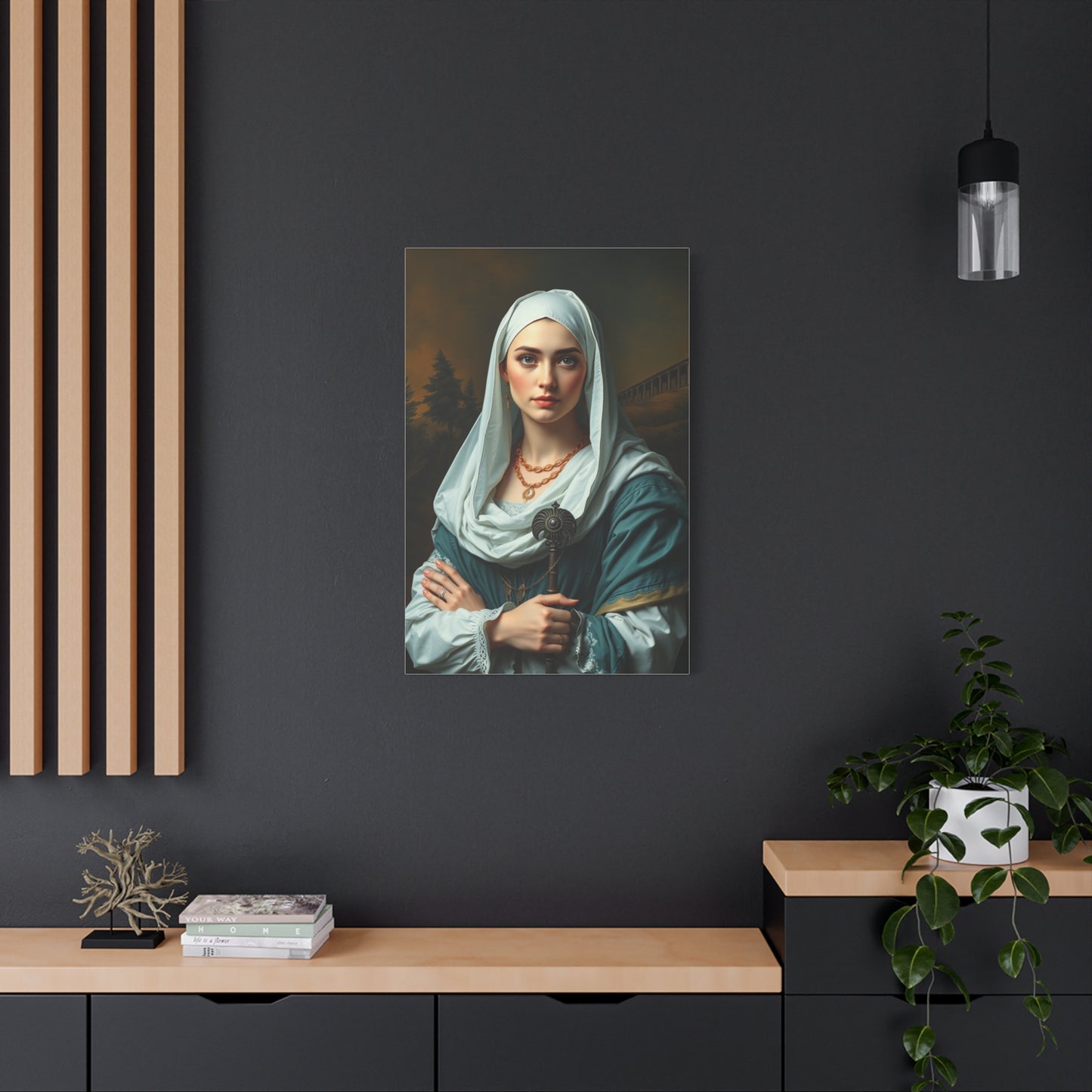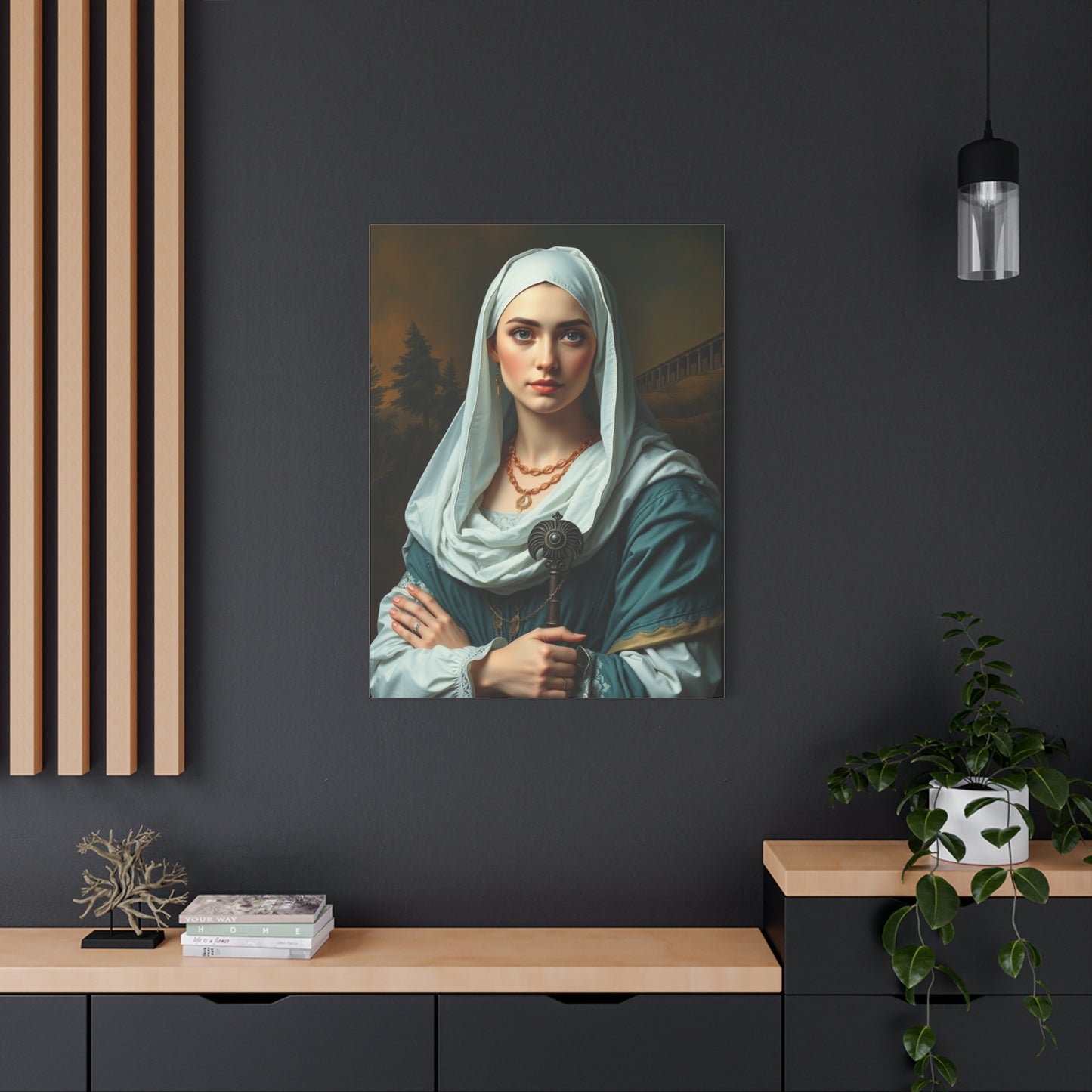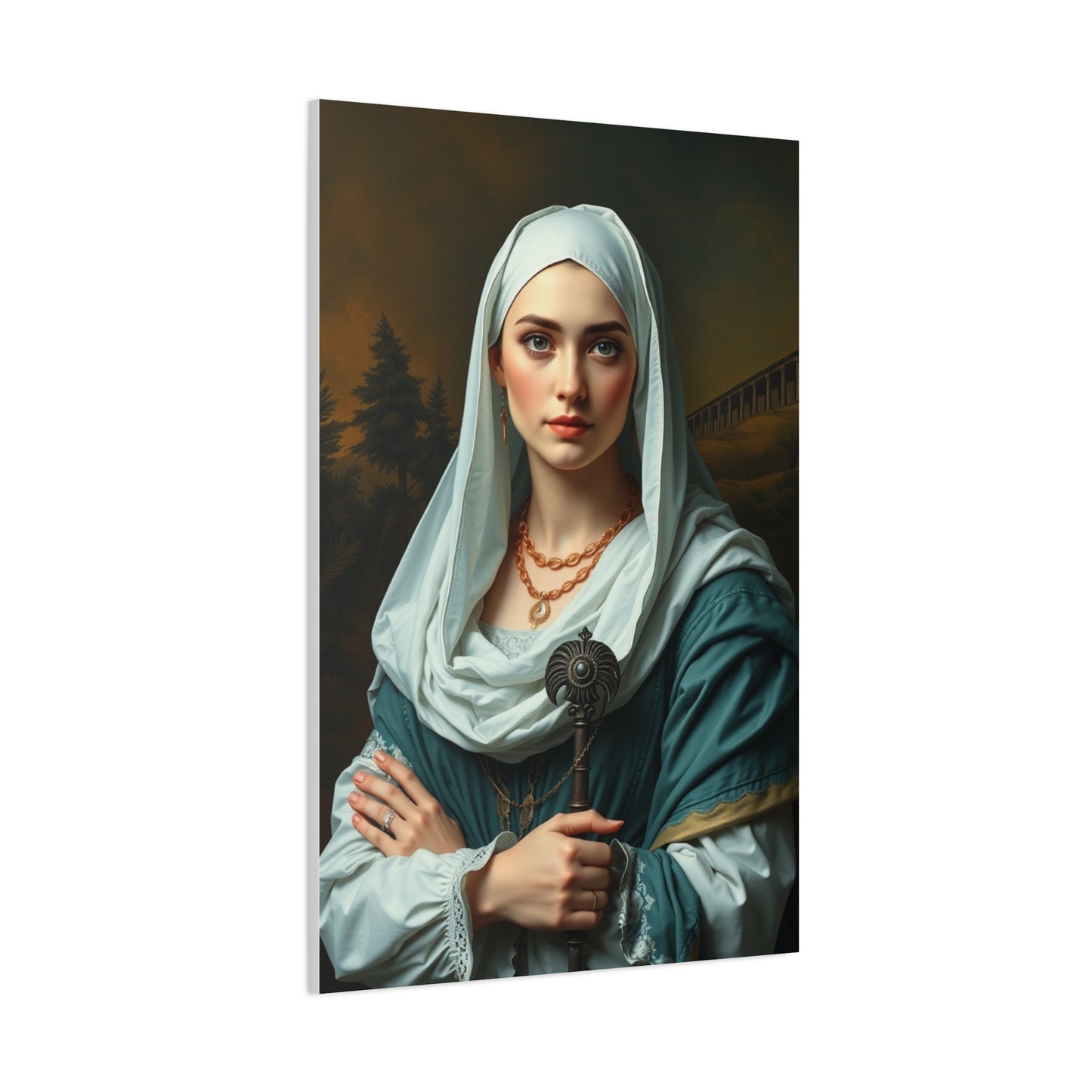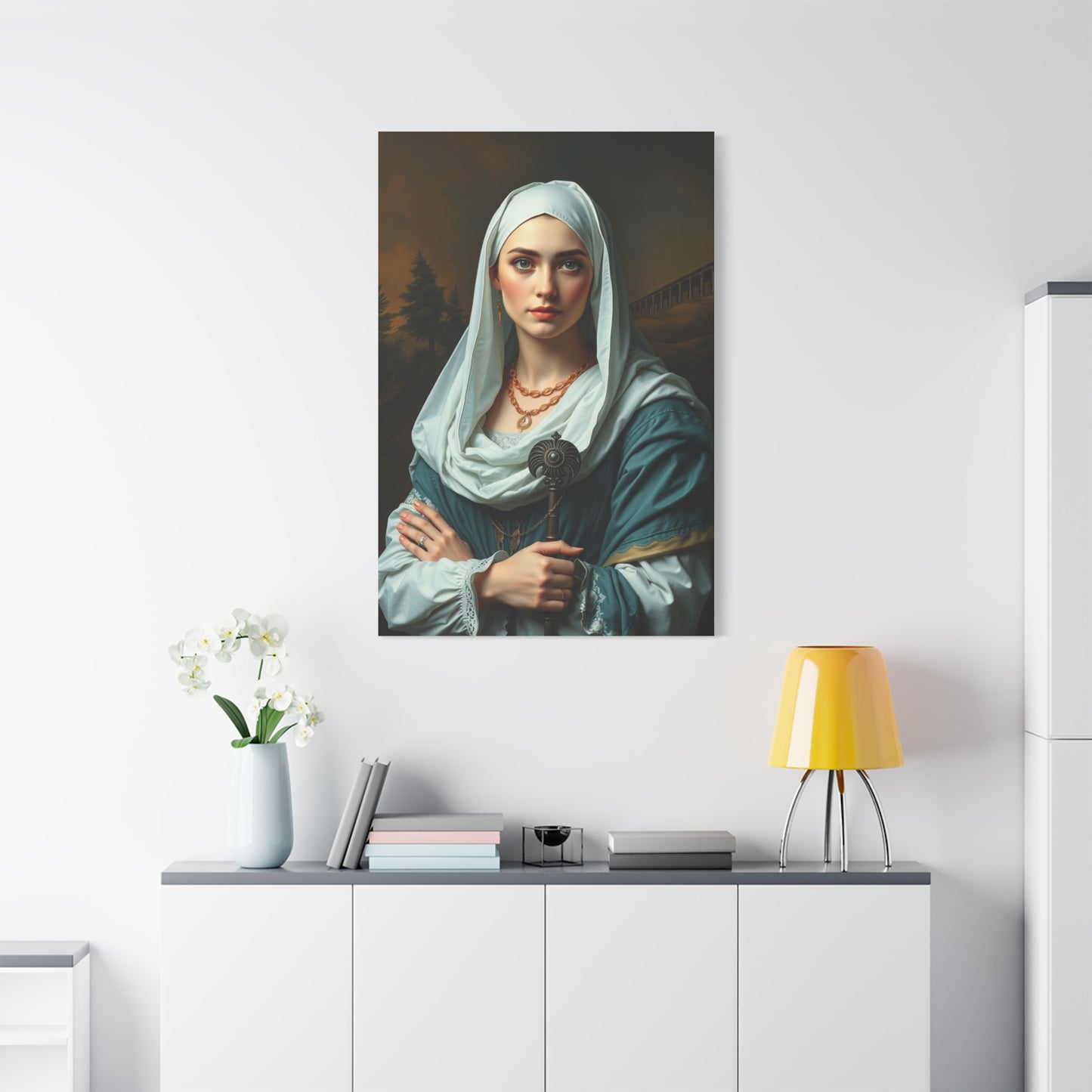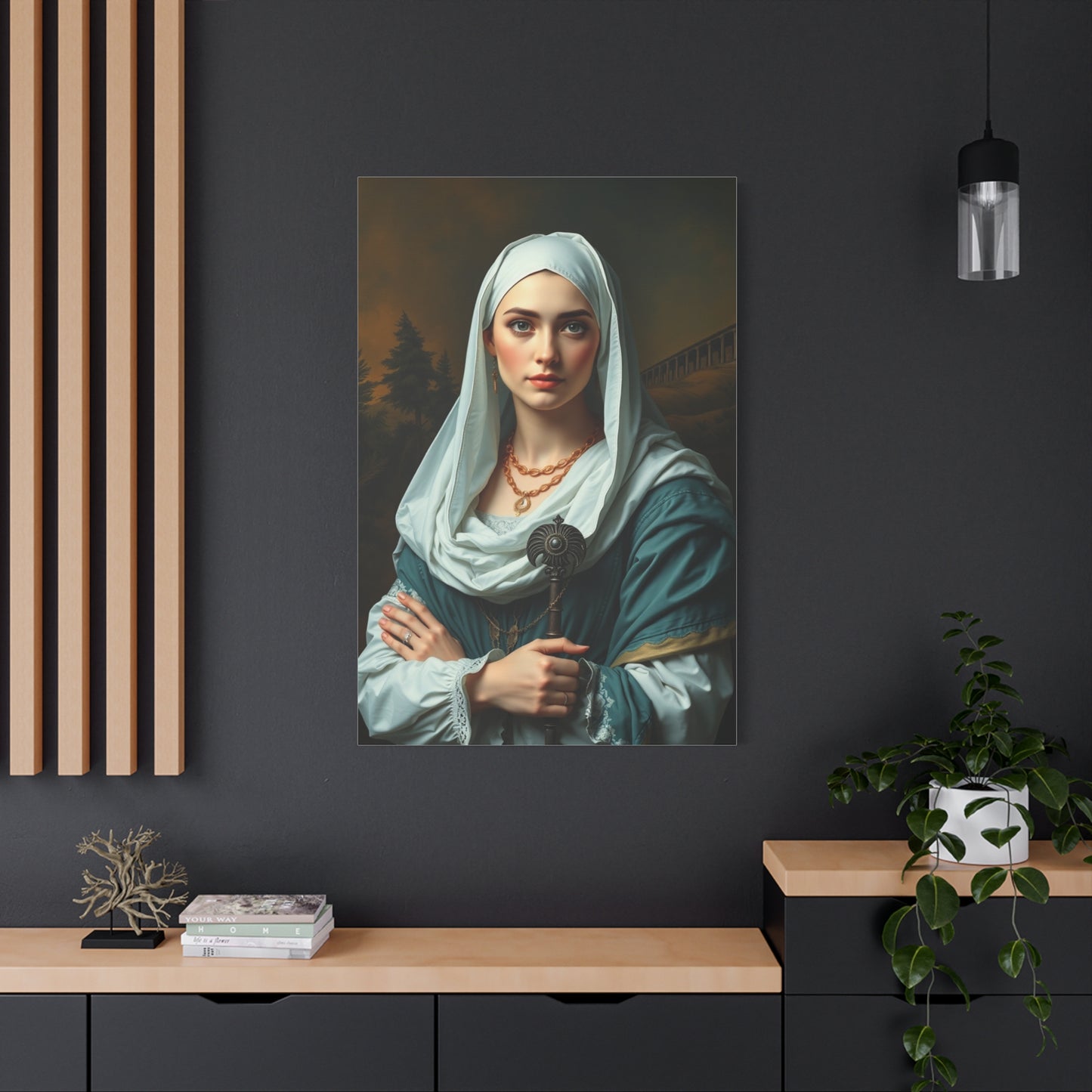Regal Legacy Wall Art: Canvas Masterpieces Celebrating Noble Heritage and Timeless Elegance
Regal legacy wall art represents an extraordinary fusion of aristocratic heritage and contemporary artistic expression that continues to captivate collectors and enthusiasts worldwide. These magnificent canvas creations serve as tangible connections to centuries of noble tradition, bringing the grandeur and sophistication of royal courts directly into modern living environments. The enduring appeal of such artistic pieces lies not only in their visual splendor but also in their ability to convey stories of power, elegance, and cultural refinement that have shaped civilizations throughout history.
The artistic representation of noble lineage through canvas works has evolved significantly over the centuries, yet the fundamental essence remains unchanged. Each brushstroke carries the weight of historical significance, while every color choice reflects the meticulous attention to detail that characterized the great masters of royal portraiture. Modern artists continue to draw inspiration from these classical traditions, creating contemporary interpretations that honor the past while speaking to present-day sensibilities.
The significance of regal imagery extends far beyond mere decoration, encompassing a rich tapestry of cultural meaning and historical context. These artistic expressions serve as windows into bygone eras, offering glimpses of the opulent lifestyles, intricate ceremonies, and complex social structures that defined aristocratic society. Through careful study and appreciation of such works, viewers can gain deeper insights into the values, aspirations, and artistic achievements that continue to influence contemporary culture.
Canvas art celebrating noble heritage often features distinctive elements that immediately distinguish it from other artistic genres. Rich color palettes dominated by deep purples, royal blues, and burnished golds create an atmosphere of majesty and grandeur. Intricate details such as elaborate costumes, ornate jewelry, and symbolic objects add layers of meaning that reward careful examination. The compositions themselves frequently employ classical techniques that emphasize dignity, power, and refined taste.
The craftsmanship required to create authentic regal legacy artwork demands exceptional skill and extensive knowledge of historical periods. Artists must master not only technical painting techniques but also develop comprehensive understanding of period-appropriate clothing, architecture, and cultural customs. This dedication to authenticity ensures that each piece serves as both artistic achievement and historical document, preserving important cultural heritage for future generations.
Contemporary collectors increasingly recognize the value of investing in high-quality regal legacy wall art as both aesthetic enhancement and potential financial asset. The market for such pieces continues to grow as more individuals seek to create sophisticated environments that reflect their appreciation for history, culture, and artistic excellence. The timeless nature of these themes ensures that such investments maintain their relevance and appeal across changing design trends and cultural shifts.
Heritage Preservation Through Artistic Expression
The preservation of noble heritage through artistic expression represents one of humanity's most enduring cultural practices. Throughout history, royal courts and aristocratic families have commissioned talented artists to create lasting monuments to their achievements, values, and aspirations. These commissioned works served multiple purposes beyond simple decoration, functioning as historical records, symbols of power, and expressions of cultural identity that would endure long after their subjects had passed into memory.
Canvas paintings depicting regal subjects often incorporate sophisticated symbolic language that communicates complex messages about authority, lineage, and divine right. Crowns, scepters, and other regalia appear not merely as decorative elements but as carefully chosen symbols that reinforce the subject's legitimate claim to power and status. The positioning of figures, the choice of backgrounds, and even the direction of gazes all contribute to the overall narrative that the artwork is meant to convey.
The techniques employed in creating heritage-focused artwork draw heavily from classical traditions that have been refined over centuries. Oil painting remains the preferred medium for many artists working in this genre, as it allows for the rich color saturation and subtle gradations of tone that are essential for capturing the luxurious textures of royal garments and precious materials. The layering techniques developed by old masters continue to inform contemporary approaches to regal portraiture.
Color symbolism plays a crucial role in heritage preservation artwork, with specific hues carrying deep cultural and historical significance. Purple has long been associated with royalty due to the historical rarity and expense of purple dyes, making it an immediate indicator of noble status. Gold represents not only material wealth but also divine favor and eternal glory. Red often symbolizes courage, power, and the willingness to shed blood for one's beliefs or subjects.
The documentation aspect of heritage preservation through art cannot be understated. Many historical events, ceremonies, and cultural practices are known to us today primarily through their artistic representations. Royal coronations, state ceremonies, and court celebrations were frequently recorded by skilled artists who served as the era's equivalent of photojournalists. These visual records provide invaluable insights into historical periods that might otherwise remain mysterious or poorly understood.
Modern conservation efforts focus heavily on preserving existing examples of regal heritage art while also encouraging contemporary artists to continue these traditions. Museums, galleries, and private collectors work together to ensure that important pieces receive proper care and remain accessible for study and appreciation. Educational programs help new generations develop appreciation for the cultural significance of these artistic traditions.
The international nature of royal heritage creates opportunities for cross-cultural exchange and understanding through art. European royal traditions, Asian imperial customs, and African tribal monarchies all contribute unique perspectives to the global heritage of regal artistic expression. Contemporary artists increasingly draw from this diverse wellspring of inspiration, creating works that celebrate the universal human fascination with nobility, power, and refined culture.
Digital technology has opened new possibilities for heritage preservation and dissemination. High-resolution scanning and printing techniques allow for the creation of museum-quality reproductions that bring important works to broader audiences. Virtual reality experiences enable viewers to explore historical royal environments and examine artworks in unprecedented detail. These technological advances help ensure that heritage preservation efforts reach new generations of art enthusiasts and cultural historians.
Noble Lineage Artistic Traditions
The artistic traditions surrounding noble lineage represent a sophisticated visual language that has evolved over millennia to communicate complex ideas about ancestry, legitimacy, and cultural continuity. These traditions encompass not only the subjects depicted in artworks but also the formal conventions, symbolic elements, and technical approaches that artists employ when creating pieces that honor aristocratic heritage. Understanding these traditions provides essential context for appreciating the depth and significance of contemporary regal legacy wall art.
Genealogical themes frequently appear in noble lineage artwork, often expressed through elaborate family trees, heraldic symbols, and ancestral portraits arranged in meaningful configurations. These visual genealogies serve both decorative and documentary purposes, helping to establish and reinforce claims to noble status while creating impressive displays that demonstrate the antiquity and continuity of aristocratic bloodlines. The artistic challenge lies in creating compositions that are both historically accurate and visually compelling.
Heraldic art forms an integral component of noble lineage traditions, with coats of arms, family crests, and other symbolic devices playing prominent roles in many artworks. These heraldic elements follow strict traditional rules regarding color usage, symbolic meaning, and compositional arrangements that have been refined over centuries. Artists working in this field must develop expertise in heraldic conventions to ensure that their works maintain authenticity and respect for established traditions.
Portrait conventions within noble lineage art follow specific formal requirements that distinguish them from other types of portraiture. Subjects are typically presented in poses that emphasize dignity, authority, and refinement, often incorporating architectural elements, luxurious furnishings, and symbolic objects that reinforce their elevated status. The lighting, composition, and color choices all contribute to creating an overall impression of nobility and refinement that transcends mere physical representation.
The concept of divine right often influences noble lineage artistic traditions, with many works incorporating religious or mythological elements that suggest supernatural sanction for aristocratic authority. Angels, religious symbols, and references to classical mythology frequently appear in these compositions, creating visual narratives that link earthly power to heavenly approval. This tradition continues to influence contemporary artists who seek to capture the mystique and grandeur associated with noble heritage.
Costume and regalia receive particular attention in noble lineage artwork, as these elements serve as immediate visual indicators of status, period, and cultural context. Artists must possess detailed knowledge of historical fashion, jewelry, and ceremonial objects to create convincing and accurate representations. The textures, colors, and intricate details of royal garments often become focal points that demonstrate both the subject's wealth and the artist's technical skill.
Architectural backgrounds in noble lineage art serve multiple functions beyond simple setting establishment. Palatial environments, Gothic cathedrals, and classical temples all carry specific associations that enhance the overall message of the artwork. These architectural elements often reflect the subject's taste, education, and cultural sophistication while providing opportunities for artists to demonstrate their mastery of perspective and architectural rendering.
The tradition of companion pieces and series within noble lineage art creates opportunities for complex narrative development across multiple canvases. Royal couples might be depicted in matching portraits that complement each other through pose, composition, and symbolic elements. Multi-generational series can trace family history through successive portraits that show the evolution of fashion, artistic styles, and cultural values over time.
Contemporary interpretations of noble lineage traditions face the challenge of maintaining respect for historical conventions while creating works that speak to modern sensibilities. Artists must balance authenticity with innovation, drawing from established traditions while incorporating contemporary perspectives and techniques. This creative tension often produces the most compelling and meaningful examples of modern regal legacy wall art.
Cultural exchange has enriched noble lineage artistic traditions by introducing elements from diverse royal cultures around the world. European court painting traditions have been influenced by Islamic miniature painting, Asian imperial portraiture, and African royal art forms. This cross-pollination of artistic traditions has created a rich, global vocabulary for expressing noble heritage that continues to evolve and expand.
Artistic Tribute Craftsmanship Excellence
The creation of exceptional artistic tributes requires a mastery of technical skills that extends far beyond basic painting abilities. Craftsmen working in the field of regal legacy wall art must possess deep understanding of historical periods, cultural contexts, and the specific visual languages associated with different noble traditions. This comprehensive expertise enables them to create works that function not merely as decorations but as authentic expressions of aristocratic heritage that honor their subjects while demonstrating the highest standards of artistic excellence.
Technical proficiency in oil painting techniques remains fundamental to creating convincing regal portraits and historical scenes. The layering methods developed by Renaissance masters continue to provide the foundation for achieving the rich color depth and subtle tonal variations that characterize high-quality regal artwork. Artists must master the complex interplay between underpainting, glazing, and finishing techniques that allow for the creation of luminous skin tones, lustrous fabrics, and gleaming metallic surfaces that define superior craftsmanship.
Color theory and pigment knowledge play crucial roles in achieving authentic historical accuracy and visual impact. Traditional pigments such as lapis lazuli for ultramarine blue, cinnabar for vermillion red, and genuine gold leaf for gilded details require specialized handling techniques and contribute to the overall authenticity of the finished work. Modern synthetic pigments can provide similar visual effects while offering improved stability and availability, but artists must understand when historical accuracy demands the use of traditional materials.
The preparation of canvas and supports represents a critical foundation for long-lasting artistic excellence. Traditional methods involving rabbit skin glue sizing and lead white grounds provide optimal surfaces for oil painting, though modern archival alternatives offer improved safety and longevity. The choice of canvas weave, priming materials, and surface preparation techniques all influence the final appearance and durability of the completed artwork.
Drawing skills form the essential foundation upon which all successful regal portraiture is built. The ability to accurately capture facial features, anatomical proportions, and the complex folds and textures of period costume requires extensive practice and deep understanding of form and structure. Many contemporary artists maintain extensive sketchbooks where they study historical garments, jewelry, and architectural details that inform their larger works.
Composition and design principles guide the creation of visually compelling and emotionally powerful artistic tributes. The classical principles of balance, proportion, and visual hierarchy continue to inform contemporary approaches to regal art, though modern artists often introduce subtle innovations that refresh traditional formats while maintaining their essential dignity and power. Understanding how to direct the viewer's attention through careful placement of focal points, color emphasis, and linear elements separates competent craft work from truly exceptional artistic achievement.
Research and historical accuracy require extensive study and attention to detail that extends well beyond the studio. Artists creating authentic historical tributes must familiarize themselves with period-appropriate clothing, jewelry, architecture, and cultural customs. This research often involves visiting museums, studying historical documents, and consulting with expert historians to ensure that every detail contributes to the work's overall authenticity and educational value.
Surface texture and finish techniques contribute significantly to the overall impact and perceived quality of regal legacy artwork. The smooth, polished surfaces associated with traditional academic painting require different approaches than the more textured surfaces that might be appropriate for contemporary interpretations. Artists must master various brush techniques, palette knife applications, and finishing methods to achieve their desired aesthetic goals.
Frame selection and presentation considerations form integral components of the overall artistic experience. Traditional gilded frames with elaborate moldings complement classical regal subjects, while more contemporary framing solutions might be appropriate for modern interpretations of noble themes. The relationship between artwork and frame should enhance rather than compete with the central image, creating a unified presentation that elevates the entire piece.
Conservation awareness influences many aspects of craftsmanship excellence, as artists must consider the long-term stability and preservation of their works. This includes understanding how different materials age and interact over time, selecting archival-quality supplies, and employing techniques that will maintain their integrity for future generations. The investment in superior materials and methods reflects the artist's commitment to creating lasting tributes worthy of their noble subjects.
Quality control and self-assessment capabilities enable artists to maintain consistently high standards throughout their careers. This involves developing critical evaluation skills that allow for objective assessment of technical achievement, historical accuracy, and artistic impact. Regular comparison with museum-quality examples and ongoing education in art history and technique help artists continue improving their craft throughout their professional development.
Professional ethics and client relationships play important roles in maintaining the integrity of the artistic tribute tradition. Artists working on commissioned pieces must balance client preferences with historical accuracy and artistic integrity, often requiring diplomatic skills and clear communication about artistic choices and limitations. The reputation and legacy of the craft depend on maintaining high standards of professionalism and artistic excellence.
Canvas Art Historical Significance
Canvas art depicting regal subjects carries profound historical significance that extends far beyond aesthetic appreciation, serving as primary source material for understanding past cultures, political structures, and social hierarchies. These artistic documents provide unique insights into historical periods that written records alone cannot convey, offering visual evidence of clothing styles, architectural details, cultural customs, and technological achievements that might otherwise be lost to time. The historical value of such works continues to grow as scholars recognize their importance for comprehensive understanding of human civilization.
The documentary function of historical canvas art cannot be overstated, as many of these works were created by artists who witnessed the events, ceremonies, and daily life they depicted. Royal portraits commissioned during a monarch's reign provide invaluable information about contemporary fashion, jewelry, and ceremonial objects. State occasions captured by court painters preserve visual records of important political and cultural events that shaped national and international relations. These artistic documents often contain details that escaped the attention of written chroniclers.
Stylistic evolution within regal canvas art reflects broader changes in artistic movements, cultural values, and technological capabilities over time. The transition from medieval manuscript illumination to Renaissance oil painting, the baroque emphasis on drama and movement, and the neoclassical revival of ancient Greek and Roman themes all influenced how noble subjects were presented and interpreted. Modern viewers can trace these stylistic developments through careful study of regal artwork from different periods.
Political propaganda and image management represent significant aspects of historical regal canvas art, as rulers and nobles commissioned works designed to project specific messages about their power, legitimacy, and cultural sophistication. The choice of artistic style, symbolic elements, and compositional arrangements all contributed to carefully constructed public images that served political purposes. Understanding these propagandistic elements provides insights into the political climate and power structures of different historical periods.
Cross-cultural artistic exchange becomes evident through the study of regal canvas art from different civilizations and time periods. European royal portraits show clear influences from Islamic manuscript painting, Chinese imperial art, and other non-Western traditions. This cultural borrowing and adaptation demonstrates the international nature of aristocratic culture and the ways in which artistic ideas traveled along trade routes and diplomatic channels.
Technological innovations in painting materials and techniques can be traced through the evolution of regal canvas art. The development of oil painting in Northern Europe, the introduction of new pigments through international trade, and improvements in canvas preparation and preservation methods all influenced how artists approached their subjects. These technological advances often appeared first in the most prestigious commissions for royal and noble patrons.
Social hierarchy and cultural values become clearly visible through the conventions and symbolic systems employed in historical regal art. The positioning of figures, the inclusion or exclusion of certain elements, and the relative emphasis placed on different aspects of the composition all reflect the social structures and cultural priorities of their time. Changes in these conventions over time reveal evolving attitudes toward authority, religion, and social organization.
Economic history finds expression in regal canvas art through the materials used, the scale of commissions, and the level of detail and finish achieved. The availability of expensive pigments, the employment of multiple assistants in large workshops, and the creation of extensive series of related works all reflect the economic resources available to royal patrons and the value placed on artistic achievement within different societies.
Gender roles and family structures receive particular attention in many historical regal artworks, with royal families often depicted in ways that reinforced contemporary ideas about proper social relationships and dynastic continuity. The portrayal of queens, princesses, and other noble women reveals changing attitudes toward female authority and the evolving role of women within aristocratic society.
Religious and philosophical influences permeate much historical regal art, reflecting the close relationship between temporal and spiritual authority in many cultures. The inclusion of religious symbols, the presentation of rulers as divinely appointed, and the incorporation of philosophical allegories all demonstrate the intellectual and spiritual context within which these works were created.
Educational value continues to make historical regal canvas art relevant for contemporary audiences. These works serve as engaging entry points for learning about history, culture, and artistic development. Museums and educational institutions increasingly use such artworks as centerpieces for broader discussions about historical periods and cultural achievements.
Preservation challenges facing historical regal canvas art highlight the ongoing importance of conservation efforts and the need for continued investment in maintaining these cultural treasures. Environmental factors, age-related deterioration, and the costs associated with professional conservation work all threaten the survival of important historical artworks. The loss of such pieces represents irreplaceable damage to our collective cultural heritage.
Fine Art Royal Flair Elements
The distinctive elements that characterize fine art with royal flair encompass a sophisticated visual vocabulary that immediately communicates nobility, refinement, and aristocratic heritage. These elements have been refined over centuries of artistic tradition and continue to inform contemporary approaches to regal-themed artwork. Understanding these distinctive characteristics enables both artists and collectors to identify authentic examples of royal flair while appreciating the cultural and artistic significance embedded within each carefully chosen detail.
Luxurious color palettes form the foundation of authentic royal flair in fine art, with specific hues carrying deep historical and symbolic significance. Rich purples, derived historically from expensive Tyrian dye, immediately signal imperial authority and divine favor. Deep crimsons and scarlets suggest power, courage, and the willingness to shed blood for noble causes. Burnished golds and warm bronzes evoke material wealth while suggesting the eternal nature of true nobility. These colors are typically applied in rich, saturated tones that create visual impact while maintaining the refined sophistication associated with aristocratic taste.
Elaborate costume details serve as primary indicators of royal status and cultural refinement within fine art compositions. Sumptuous fabrics such as silk, velvet, and brocade receive careful attention to texture and surface quality that demonstrates both the subject's wealth and the artist's technical skill. Intricate embroidery, precious metal threads, and gemstone embellishments add layers of visual interest while providing authentic period details. The accurate representation of historical fashion requires extensive research and understanding of textile production methods from different eras.
Precious metal and gemstone elements appear throughout royal flair artwork as both decorative features and symbolic statements. Crowns, scepters, and other regalia receive particular attention, with artists often spending considerable effort capturing the play of light across polished metal surfaces and the brilliant fire of cut gems. These elements serve multiple functions beyond mere decoration, acting as symbols of authority, divine sanction, and dynastic continuity that reinforce the subject's legitimate claim to noble status.
Architectural backgrounds incorporating palatial settings, Gothic cathedrals, and classical temples provide appropriate contexts for royal subjects while demonstrating their cultural sophistication and resources. These architectural elements often feature elaborate decorative details such as carved stonework, painted ceilings, and ornate furnishings that create rich, complex environments worthy of noble occupation. The accurate representation of period architecture requires understanding of historical building techniques and decorative styles.
Heraldic elements including coats of arms, family crests, and other symbolic devices add layers of meaning and authenticity to royal flair artwork. These heraldic features follow traditional rules regarding color usage, symbolic imagery, and compositional arrangements that have been established over centuries. Proper implementation of heraldic elements requires specialized knowledge of genealogy, symbolism, and the formal conventions governing aristocratic identification systems.
Classical mythological references frequently appear in royal flair art as a means of linking contemporary nobility to ancient traditions of power and cultural achievement. Gods and goddesses, heroic figures from classical literature, and allegorical representations of virtues such as Justice, Wisdom, and Courage create visual narratives that elevate the subject beyond mere mortal status. These mythological elements require understanding of classical literature and symbolic traditions.
Lighting effects and atmospheric qualities contribute significantly to the overall impact of royal flair artwork, with many pieces employing dramatic chiaroscuro techniques that emphasize the importance and dignity of noble subjects. Golden hour lighting, candlelit interiors, and other atmospheric effects create mood and emotional resonance while highlighting important details and symbolic elements. Master lighting control requires understanding of both technical painting methods and the psychological impact of different lighting conditions.
Symbolic objects and attributes appear throughout royal flair compositions as visual shorthand for specific virtues, achievements, or areas of authority. Books suggest learning and wisdom, musical instruments indicate cultural refinement, military equipment demonstrates courage and leadership capability, and scientific instruments show intellectual curiosity and progressive thinking. These symbolic elements must be chosen carefully to create coherent narratives that enhance rather than distract from the overall composition.
Compositional grandeur in royal flair art typically employs classical principles of balance and proportion while incorporating elements of scale and positioning that emphasize the subject's importance and authority. Subjects are often positioned centrally or in positions of visual dominance, with supporting elements arranged to direct attention toward the primary figure. The overall composition should convey dignity, stability, and refined taste through careful attention to visual hierarchy and balance.
Surface quality and finish techniques contribute to the perception of luxury and refinement that defines royal flair artwork. Smooth, polished surfaces reminiscent of fine porcelain or precious metals create associations with expensive decorative objects, while subtle textural variations add visual interest without disrupting the overall sense of refinement. Achieving these surface qualities requires mastery of various painting techniques and understanding of how different approaches affect the viewer's perception.
Contemporary interpretations of royal flair elements must balance historical authenticity with modern sensibilities and artistic innovations. While maintaining respect for traditional conventions, contemporary artists often introduce subtle updates that refresh classical approaches while preserving their essential dignity and cultural significance. This creative tension between tradition and innovation continues to drive the evolution of royal flair artistic expression.
Regal Tradition Modern Canvas
The adaptation of classical regal traditions to contemporary canvas art represents a fascinating intersection of historical reverence and modern artistic innovation. Today's artists working within this genre face the complex challenge of honoring centuries-old conventions while creating works that speak meaningfully to contemporary audiences and reflect current artistic sensibilities. This ongoing dialogue between past and present continues to produce compelling artworks that maintain the essential dignity and grandeur of royal tradition while incorporating fresh perspectives and technical approaches.
Contemporary artistic techniques have expanded the possibilities for expressing regal themes while maintaining authentic historical character. Modern acrylic paints offer brilliant color saturation and improved archival stability, allowing artists to achieve the rich, jewel-like tones associated with traditional royal portraiture while benefiting from superior longevity and working properties. Advanced canvas preparation methods and synthetic grounds provide optimal painting surfaces that combine the working qualities of traditional materials with enhanced durability and consistency.
Digital technology influences modern regal canvas art in numerous ways, from initial research and design development through final presentation and documentation. High-resolution photography of museum collections allows artists to study historical examples in unprecedented detail, examining brushwork techniques, color relationships, and compositional elements that might not be visible during casual gallery visits. Digital color matching systems enable precise recreation of historical pigments and color relationships while maintaining contemporary archival standards.
Cultural sensitivity considerations play increasingly important roles in contemporary approaches to regal tradition, as modern artists must navigate complex questions about representation, cultural appropriation, and historical interpretation. The romanticization of aristocratic culture must be balanced against awareness of the social inequalities and injustices that often characterized historical monarchical systems. Contemporary artists increasingly seek ways to celebrate artistic achievement and cultural heritage while acknowledging the complex realities of historical aristocratic societies.
Fusion approaches combining elements from different cultural traditions create opportunities for innovative expressions of royal grandeur that reflect our increasingly global perspective on nobility and cultural achievement. Artists might incorporate design elements from European royal portraiture with compositional approaches drawn from Asian imperial art, or blend African royal iconography with American democratic ideals to create works that speak to universal human aspirations for dignity and excellence.
Material innovation continues to expand the technical possibilities available to artists working with regal themes. New pigment formulations provide unprecedented color stability and vibrancy while maintaining the traditional working properties that artists require for achieving classical effects. Improved canvas materials and preparation methods ensure that contemporary works will maintain their integrity for future generations while providing optimal surfaces for artistic expression.
Market considerations influence how contemporary artists approach regal tradition, as collectors and institutions seek works that combine historical authenticity with contemporary relevance and artistic merit. The challenge lies in creating pieces that satisfy demands for both traditional craftsmanship and innovative artistic vision while maintaining the essential character that defines authentic regal art. Successful contemporary artists in this field develop distinctive personal styles that honor tradition while expressing individual artistic personalities.
Educational opportunities through workshops, masterclasses, and academic programs help ensure the continuity of traditional techniques and cultural knowledge necessary for authentic regal art creation. These educational initiatives connect contemporary artists with established masters while providing access to historical knowledge and technical skills that might otherwise be lost. The transmission of traditional knowledge through formal and informal educational networks remains crucial for maintaining authentic artistic traditions.
Exhibition strategies for contemporary regal canvas art must balance respect for traditional presentation methods with modern museum and gallery practices. Traditional gilded frames and formal hanging arrangements may be appropriate for some works, while others benefit from more contemporary presentation approaches that highlight their innovative aspects while maintaining appropriate dignity. The presentation context significantly influences how audiences perceive and interpret these works.
Critical reception of contemporary regal art varies widely depending on cultural background, artistic education, and personal aesthetic preferences. Some critics appreciate the technical mastery and cultural continuity represented by traditional approaches, while others favor more innovative interpretations that challenge conventional expectations. The ongoing critical dialogue surrounding these works contributes to their continued development and cultural relevance.
Patronage patterns for contemporary regal art reflect changing economic structures and cultural priorities while maintaining some connections to historical commissioning practices. Private collectors, corporate clients, and institutional patrons all contribute to supporting artists working in this tradition, though the motivations and expectations may differ significantly from those of historical royal patrons. Understanding contemporary patronage patterns helps artists navigate current market conditions while maintaining artistic integrity.
Future directions for regal tradition in modern canvas art likely will continue expanding the boundaries of acceptable innovation while preserving essential traditional elements. Environmental consciousness may influence material choices and working methods, while global cultural exchange will probably introduce new fusion possibilities. The challenge will remain balancing innovation with authenticity while creating works that maintain relevance for future generations of artists and art enthusiasts.
Legacy Masterpiece Visual Impact
The visual impact of legacy masterpieces extends far beyond their immediate aesthetic appeal, creating powerful emotional and psychological responses that connect viewers to centuries of cultural achievement and artistic excellence. These remarkable works possess the ability to transport observers across time and cultural boundaries, offering glimpses into the minds and hearts of both their creators and subjects while demonstrating the enduring power of visual art to communicate complex ideas and emotions. Understanding the elements that contribute to this profound visual impact enhances appreciation for these cultural treasures while providing insights for contemporary artists seeking to create equally compelling works.
Compositional mastery forms the foundation of exceptional visual impact in legacy regal artworks. The careful arrangement of figures, objects, and spatial elements creates visual pathways that guide the viewer's attention through the composition while establishing clear hierarchies of importance. Classical principles such as the golden ratio, triangular compositions, and balanced asymmetry continue to inform successful approaches to creating visually compelling arrangements that feel both stable and dynamic.
Color harmony and contrast relationships generate emotional responses that enhance the overall impact of legacy masterpieces. The strategic use of complementary colors creates visual excitement and draws attention to important elements, while analogous color schemes produce feelings of harmony and refinement appropriate to noble subjects. The masterful control of color temperature, saturation, and value relationships enables artists to create mood and atmosphere that support the intended emotional response to the work.
Scale and proportion considerations significantly influence the psychological impact of regal artwork on viewers. Larger works create sense of grandeur and importance that smaller pieces cannot achieve, while carefully considered proportional relationships between figures and architectural elements establish appropriate contexts for noble subjects. The relationship between the artwork and its viewing environment also affects impact, with appropriately scaled works creating optimal viewing experiences.
Surface quality and paint handling techniques contribute to the tactile appeal and visual richness that characterize truly impactful legacy masterpieces. Smooth, highly finished surfaces create associations with precious objects and refined craftsmanship, while visible brushwork and textural variation add vitality and artistic personality. The interplay between different surface treatments within a single work can create visual interest while maintaining overall compositional unity.
Symbolic density and layered meaning provide intellectual engagement that enhances the lasting impact of exceptional regal artworks. Works that reward careful examination and study maintain viewer interest over extended periods while offering new discoveries with each viewing. The skillful integration of symbolic elements into visually compelling compositions creates art that functions simultaneously as aesthetic object and cultural document.
Emotional authenticity in the portrayal of noble subjects creates psychological connections between viewers and historical figures that transcend temporal boundaries. The ability to capture genuine human emotion and personality within formal portrait conventions requires exceptional skill and sensitivity. Masterful artists achieve this authenticity while maintaining the dignity and grandeur appropriate to their elevated subjects.
Technical virtuosity in the execution of challenging elements such as elaborate costumes, precious materials, and complex architectural backgrounds demonstrates the artist's mastery while creating visual spectacle that impresses and engages viewers. The convincing representation of different textures, surfaces, and materials requires extensive knowledge and skill that viewers instinctively recognize and appreciate.
Cultural resonance enables legacy masterpieces to maintain relevance and impact across changing historical periods and cultural contexts. Works that successfully capture universal human experiences and aspirations continue to speak meaningfully to contemporary audiences despite their historical origins. This cultural relevance ensures continued appreciation and study of important artistic achievements.
Lighting effects and atmospheric qualities create dramatic impact while serving narrative and symbolic functions within the composition. The strategic use of light and shadow can emphasize important elements, create mood, and establish symbolic relationships between different aspects of the work. Masterful lighting control requires understanding of both technical painting methods and the psychological effects of different lighting conditions.
Conservation status and physical condition significantly affect the visual impact of legacy masterpieces, with well-preserved examples maintaining their original power to move and inspire viewers. Conservation efforts ensure that important cultural artifacts remain accessible for future generations while maintaining their authentic appearance and emotional impact. The investment in proper conservation reflects society's recognition of these works' continuing cultural value.
Contemporary relevance and interpretive frameworks influence how modern audiences experience and understand legacy masterpieces. Educational materials, curatorial interpretation, and scholarly research provide contexts that enhance appreciation while ensuring that these works continue to generate meaningful cultural dialogue. The ongoing reinterpretation of historical artworks keeps them alive as active participants in contemporary cultural discourse.
Stylish Noble Heritage Displays
Creating stylish displays that honor noble heritage while complementing contemporary living environments requires careful consideration of multiple aesthetic and practical factors. The challenge lies in presenting these culturally significant artworks in ways that respect their historical importance while ensuring they enhance rather than overwhelm modern residential and commercial settings. Successful heritage displays create meaningful connections between past and present while demonstrating sophisticated taste and cultural appreciation.
Lighting design plays a crucial role in creating effective noble heritage displays that properly showcase artwork while creating appropriate atmosphere. Museum-quality LED lighting systems provide optimal color rendering and UV protection while allowing for precise control over intensity and beam angle. Track lighting systems offer flexibility for adjusting illumination as collections grow and change, while picture lights provide focused illumination for individual pieces. The color temperature of lighting significantly affects how viewers perceive colors and overall mood, with warmer tones generally complementing traditional regal subjects.
Wall preparation and surface considerations ensure that heritage displays achieve professional presentation standards while protecting valuable artworks. Neutral wall colors typically provide optimal backgrounds for regal art, with warm whites, soft grays, and muted earth tones creating sophisticated contexts that don't compete with the artwork for attention. Textured wall treatments can add visual interest while maintaining appropriate dignity, though smooth surfaces generally provide cleaner, more formal presentations suited to noble subjects.
Frame selection and presentation methods significantly influence the overall impact of heritage displays while protecting artworks and enhancing their visual appeal. Traditional gilded frames complement classical regal subjects while providing appropriate historical context, though contemporary framing solutions may be suitable for modern interpretations of noble themes. The relationship between frame and artwork should enhance the piece while maintaining appropriate proportional relationships. Custom matting and mounting ensure optimal presentation while providing archival protection.
Spatial arrangement principles guide the creation of visually compelling and culturally coherent heritage displays. Grouping related pieces can create narrative sequences that tell stories about historical periods, artistic development, or family lineages. The spacing between artworks affects viewing comfort and visual impact, with closer arrangements creating intimate gallery-like experiences while more generous spacing allows each piece to command individual attention. Sight lines and viewing angles must be considered to ensure optimal appreciation from multiple positions.
Security considerations become important factors when displaying valuable heritage artworks, particularly in commercial or semi-public settings. Discrete security systems can provide protection without detracting from aesthetic appeal, while proper insurance coverage protects financial investments. Environmental monitoring helps maintain stable conditions that preserve artworks while preventing damage from temperature and humidity fluctuations.
Complementary decorative elements can enhance heritage displays while maintaining focus on the primary artworks. Period-appropriate furniture, decorative objects, and architectural details can create immersive environments that transport viewers to historical periods. However, these supporting elements must be chosen carefully to avoid visual competition or historical confusion. The goal is creating unified presentations that feel authentic without becoming theme park-like caricatures.
Scale relationships between artworks and their display environments affect psychological impact and viewing comfort. Large-scale regal portraits require generous wall space and appropriate ceiling heights to achieve their intended grandeur, while smaller works may be more suitable for intimate settings. The proportional relationship between artwork size and room dimensions influences whether pieces feel appropriately placed or awkwardly scaled.
Curatorial narratives can transform heritage displays from simple decoration into meaningful cultural experiences that educate and inspire viewers. Thoughtful selection and arrangement of pieces can tell stories about historical periods, artistic movements, or cultural values that enhance appreciation and understanding. Accompanying materials such as labels, brochures, or digital resources can provide context without cluttering the visual presentation.
Sophisticated Cultural Canvas Expressions
Sophisticated cultural canvas expressions represent the pinnacle of artistic achievement in the realm of heritage and noble-themed artwork, combining technical mastery with deep cultural understanding to create works that transcend simple decoration and function as meaningful cultural statements. These exceptional pieces demonstrate the artist's command of both traditional techniques and contemporary sensibilities while addressing complex themes related to identity, heritage, and cultural continuity. The creation of such sophisticated expressions requires extensive knowledge, exceptional skill, and sensitivity to cultural nuances.
Maintenance and care protocols ensure that heritage displays maintain their impact and protect valuable artworks over time. Regular cleaning schedules, environmental monitoring, and periodic professional assessments help preserve both artistic and financial investments. Understanding proper handling, cleaning, and storage procedures prevents damage while maintaining optimal presentation conditions.
Flexibility and adaptability features allow heritage displays to evolve and change while maintaining their essential character and appeal. Modular hanging systems enable easy rearrangement of collections, while adjustable lighting allows for accommodation of different artworks and changing needs. Planning for future growth and change ensures that display investments remain relevant and functional over extended periods.
Integration with contemporary design elements requires careful balance between historical authenticity and modern aesthetic sensibilities. Successfully blending noble heritage displays with contemporary furnishings and architecture creates sophisticated environments that feel both historically grounded and current. This integration should feel natural and intentional rather than forced or compromised, maintaining the integrity of both historical and contemporary elements.
Conclusion
In conclusion, Regal Legacy Wall Art stands as a profound testament to the enduring allure of noble heritage and timeless elegance. Through the meticulous craftsmanship of canvas masterpieces, this art form bridges the past and present, offering a unique way to honor lineage, celebrate cultural richness, and transform living spaces into sanctuaries of sophistication. The regal legacy captured in these artworks goes beyond mere decoration; it is an invitation to immerse oneself in history, tradition, and the elevated aesthetics that have long been associated with aristocracy and refinement.
The appeal of Regal Legacy Wall Art lies in its ability to encapsulate stories of grandeur and grace, often passed down through generations, in a form that resonates with contemporary tastes. These canvases are not simply visual expressions; they are carriers of memory and identity. By showcasing motifs, symbols, and portraits that reflect noble heritage, the art invokes a sense of pride and continuity. It connects the viewer to a lineage of values such as honor, resilience, and artistry that define a regal legacy. Each brushstroke, color choice, and composition is thoughtfully curated to evoke an emotional response that transcends time and place.
Moreover, the timeless elegance that characterizes these canvas masterpieces adds a sophisticated dimension to interior decor. Unlike fleeting trends, regal-inspired wall art offers enduring beauty that complements various design styles—from classic and traditional to modern and eclectic. The rich textures, intricate details, and majestic themes create focal points that command attention and admiration. As a result, these artworks elevate any room’s ambiance, transforming ordinary walls into majestic displays of culture and taste. Whether displayed in a stately home, a refined office, or a personal sanctuary, Regal Legacy Wall Art enriches the environment with an aura of dignity and grandeur.
Importantly, the production of these masterpieces involves not only artistic skill but also a deep appreciation for historical accuracy and symbolism. Artists and creators behind Regal Legacy Wall Art dedicate themselves to researching heraldic elements, family crests, and noble iconography, ensuring that each piece is authentic and meaningful. This dedication to detail honors the original stories and traditions that inspire the work, making the art more than decorative—it becomes educational and inspirational. It serves as a reminder of the significance of heritage in shaping individual and collective identities, encouraging viewers to reflect on their own roots and the legacies they wish to leave behind.
In today’s fast-paced world, where mass-produced art and digital images dominate, Regal Legacy Wall Art offers a refreshing return to artisanal excellence and historical reverence. The tactile nature of canvas as a medium enhances the sensory experience of engaging with these masterpieces. The texture and depth of the canvas invite closer inspection and contemplation, allowing the observer to appreciate the nuances of technique and design. This tangible connection fosters a deeper appreciation of art as a craft and as a vehicle for storytelling. It underscores the value of investing in pieces that are not only beautiful but also imbued with meaning and heritage.
Furthermore, Regal Legacy Wall Art transcends cultural boundaries, appealing to a global audience fascinated by the mystique of nobility and classic elegance. While rooted in specific historical contexts, the themes explored—honor, legacy, beauty—are universal. This universality makes the art accessible and relevant to diverse individuals who seek to infuse their surroundings with a sense of history and sophistication. By integrating regal motifs and noble aesthetics, these artworks encourage a dialogue between cultures and eras, enriching the viewer’s understanding of art’s role in preserving and celebrating human achievements.
Finally, investing in Regal Legacy Wall Art is an investment in legacy itself. These masterpieces serve as heirlooms that can be cherished and passed down through generations, carrying stories and values forward in a tangible form. They inspire not only admiration but also a sense of responsibility to uphold the virtues and traditions they represent. In doing so, Regal Legacy Wall Art fosters a meaningful connection between past, present, and future, reminding us that true elegance and nobility are timeless qualities worth preserving and celebrating.

















